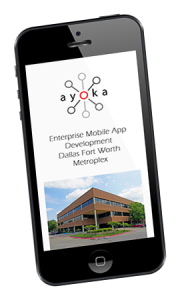Enterprise Mobile App Development : Dallas Fort Worth Metroplex
Usability Practices for User Accessibility
The web has evolved into a platform for unification. Through the utilization of multiple internet-capable devices, users from all nations, demographics, and health backgrounds can easily come together to indulge in rich media. Hypothetically, if an interested business or group sets a goal to increase client growth, they achieve it by building their web presence. The process of asserting their web presence is not as easy as simply putting up a site and calling it home. When creating the perfect web presence, the designers should always ask themselves if the design excludes any portion of potential users.
World Health Organization has surmounted that 285 million people are visually impaired. Web Accessibility is a practice implemented to bridge disabled users to the massive amount of information on the internet. There are an array of different tools available for web designers and developers to ease access of the web for these users. Any website should prioritize their design with web accessibility in mind in order to easily imagine your web presence without sound or color, under magnified screen, with voice control, or any combination of the aforementioned instances. Best practices for optimizing usability with user accessibility in mind include:
- Managing the focus of your user will retain their attention while prioritizing your content layouts and helps the user to navigate the page with ease. Support of mouse-free and even spoken navigation are simple implementation that will cater to users’ needs, making your web presence that much more engaging.
- Using spatial reasoning and drawing relationships between their contrast through size and color can cater to users. Also, ensuring the web application and its layout can handle larger font sizes or gracefully zoom into text will give users a more welcome feel that is easily readable.
- Creating interactive controls that are easily discoverable and providing alternative text to images and video can optimize load time and make the user feel more comfortable with electing not to utilize these features. Giving meaningful titles to your links will lend assistance to any site visitor and make navigation more efficient.
Remaining conscientious of disabled potential users can take your web presence from a showcase to a truly interactive and accessible means for any user. Because of the web’s inclusive paradigm, it is vital to understand that user experience must be treated as the major focus in web design. Further reading and involvement in the web accessibility community can be done at WebAIM. For more information about strategies, guidelines and other resources, visit W3C Web Accessibility Initiative.

